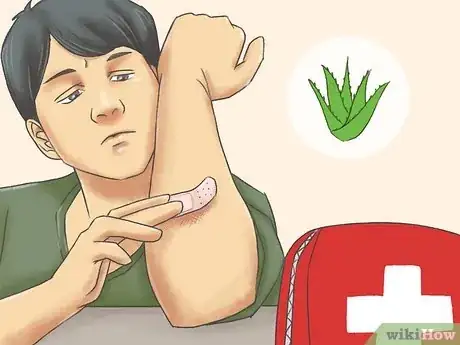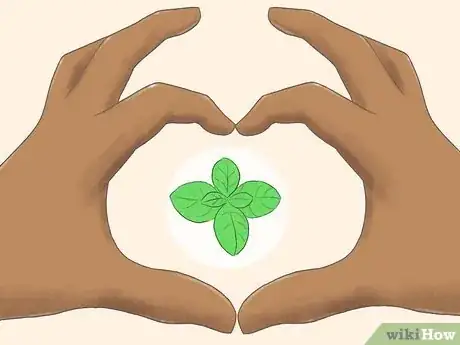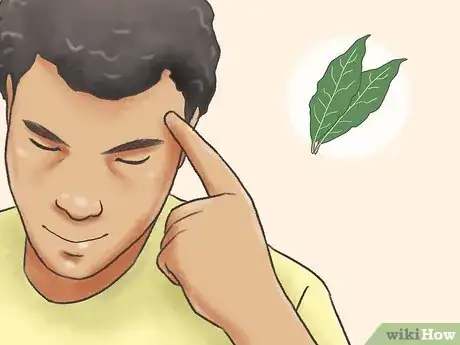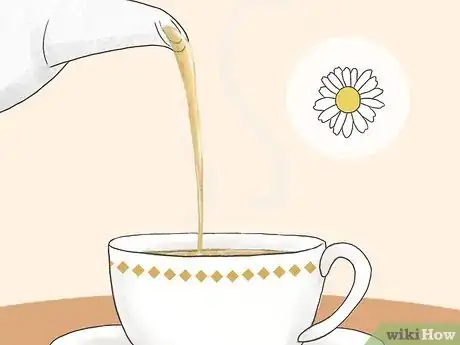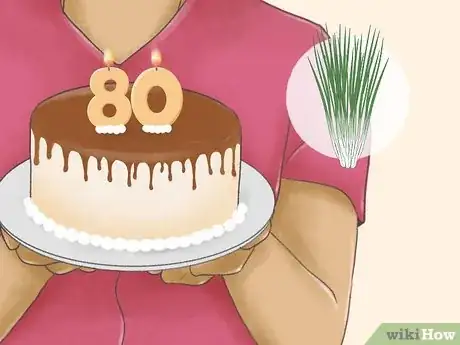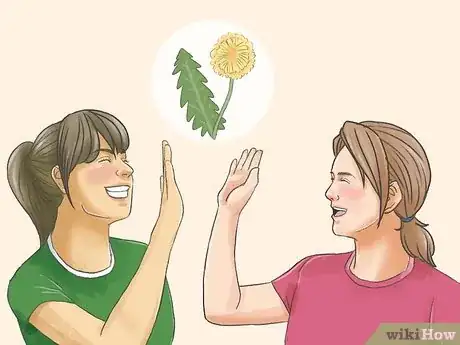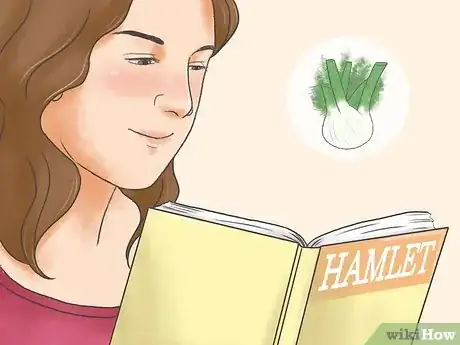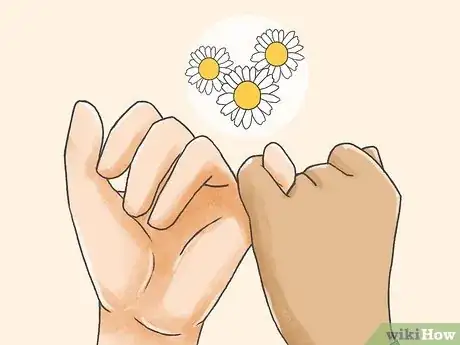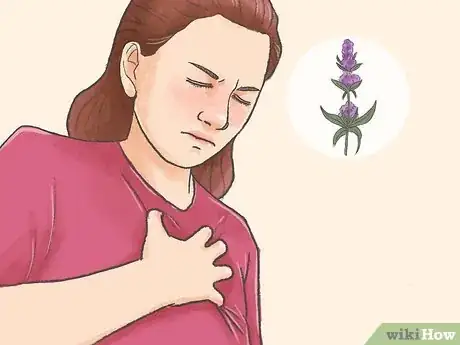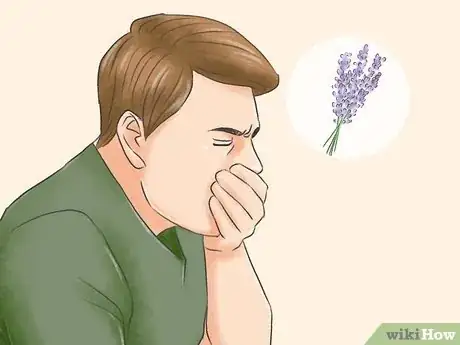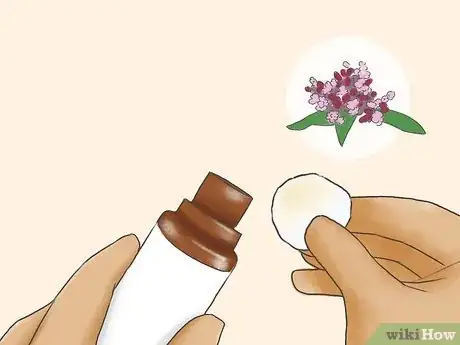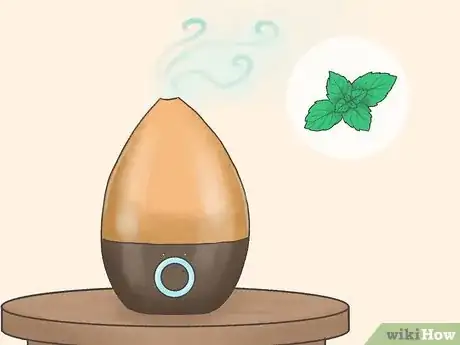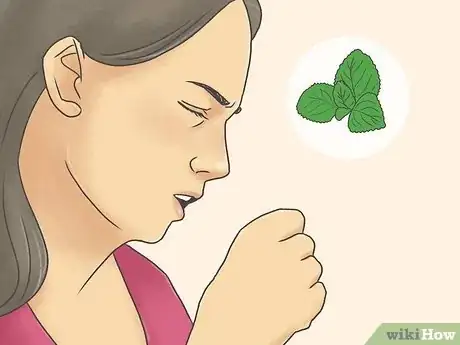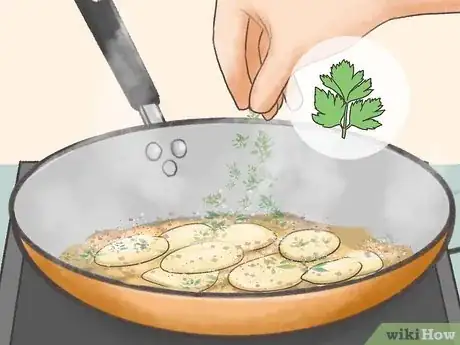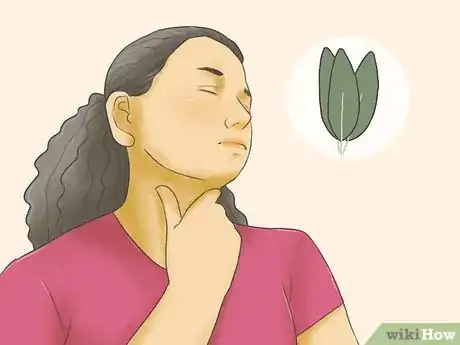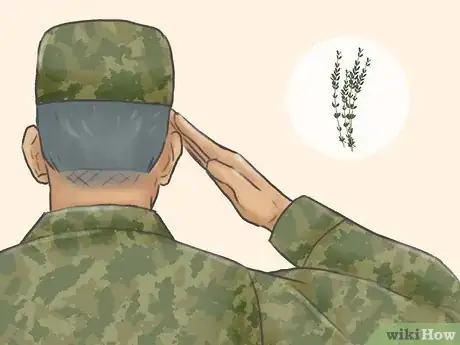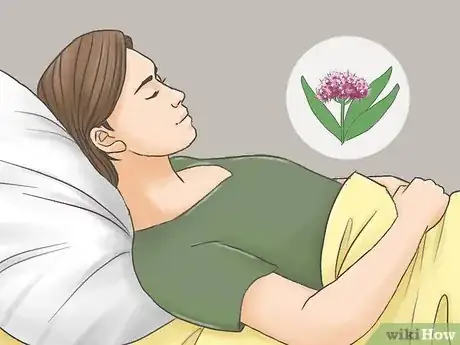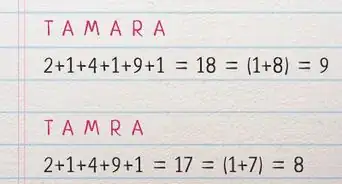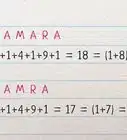This article was co-authored by wikiHow staff writer, Janice Tieperman. Janice is a professional and creative writer who has worked at wikiHow since 2019. With both a B.A. and M.A. in English from East Stroudsburg University, she has a passion for writing a wide variety of content for anyone and everyone. In her free time, you can find her working on a new crochet pattern, listening to true crime podcasts, or tackling a new creative writing project.
There are 64 references cited in this article, which can be found at the bottom of the page.
This article has been viewed 7,361 times.
Learn more...
You may be familiar with the language of flowers… but did you know that herbs also carry special meaning and symbolism? From angelica and basil to chamomile and lavender, all herbs have special meanings, medicinal purposes, and magical properties—and we’re here to cover all of them. Scroll on to learn a little more about your favorite herbs, and how you can use them in your bouquets, natural medicine, and/or magic rituals.
Things You Should Know
- The color of an herb can influence its meaning. Dandelion, for instance, has different meanings depending on if it’s yellow, pink, or white.
- Dill, basil, blue hyssop, echinacea, lavender, and yarrow all represent love. Blue hyssops specifically signify brotherly love, while echinacea stands for motherly love.
- Herbs like parsley and hyssop have special significance and symbolism in certain faiths.
Steps
Warnings
- Always consult with a doctor before using herbal supplements or natural remedies.⧼thumbs_response⧽
References
- ↑ https://gardens.si.edu/wp-content/uploads/2020/05/SIGardens_HistBloom_Language_of_Flowers.pdf
- ↑ https://www.mayoclinic.org/drugs-supplements-aloe/art-20362267
- ↑ https://www.wicca.com/herbal/a-z.html#a
- ↑ https://www.petalrepublic.com/angelica-flower/#Angelica-Flower-Meaning-&-Symbolism
- ↑ https://www.cancer.gov/publications/dictionaries/cancer-terms/def/angelica-root
- ↑ https://witchipedia.com/book-of-shadows/herblore/angelica/
- ↑ https://hortnews.extension.iastate.edu/1997/3-21-1997/basil.html
- ↑ https://www.frontiersin.org/articles/10.3389/fphar.2021.805391/full
- ↑ https://wiccaliving.com/magical-properties-herbs/
- ↑ https://www.finegardening.com/article/bay-laurus-nobilis-from-legend-and-lore-to-fragrance-and-flavor
- ↑ https://www.herbsociety.org/file_download/inline/36752f58-e810-4e3d-8103-55924bf2fd9b
- ↑ https://wiccaliving.com/magical-properties-herbs/
- ↑ https://thepracticalherbalist.com/advanced-herbalism/6148/
- ↑ https://www.mountsinai.org/health-library/herb/calendula
- ↑ https://us20.campaign-archive.com/?u=08b2468195beb1c529a55ee1f&id=fce0546ca1
- ↑ https://www.petalrepublic.com/chamomile-flower-meaning/#11-chamomile-flower-meaning-amp-symbolism-
- ↑ https://www.urmc.rochester.edu/encyclopedia/content.aspx?contenttypeid=1&contentid=1169
- ↑ https://wiccaliving.com/magical-properties-herbs/
- ↑ https://www.nationsonline.org/oneworld/Chinese_Customs/food_symbolism.htm
- ↑ https://lorenzogardenfavors.weebly.com/symbolism-of-herbs.html
- ↑ https://www.cs.mcgill.ca/~rwest/wikispeedia/wpcd/wp/c/Chives.htm
- ↑ https://www.johnhuntpublishing.com/blogs/moon-books/magical-food-chives/
- ↑ https://nutritionalgeography.faculty.ucdavis.edu/coriander/
- ↑ http://heritagegarden.uic.edu/cilantro-coriandrum-sativum
- ↑ https://www.wicca.com/herbal/a-z.html#c
- ↑ https://www.petalrepublic.com/dandelion-flower-symbolism/#11-dandelion-flower-meaning-amp-symbolism-
- ↑ https://www.mountsinai.org/health-library/herb/dandelion
- ↑ https://www.wicca.com/herbal/a-z.html#d
- ↑ https://www.petalrepublic.com/dill-flower/#12-dill-flower-meaning-amp-symbolism-
- ↑ https://www.sciencedirect.com/topics/agricultural-and-biological-sciences/dill
- ↑ https://www.wicca.com/herbal/a-z.html#d
- ↑ https://www.petalrepublic.com/echinacea-coneflower-meaning/#10-the-meaning-symbolism-and-cultural-significance-of-echinacea-coneflower-
- ↑ https://www.nccih.nih.gov/health/echinacea
- ↑ https://witchipedia.com/book-of-shadows/herblore/echinacea/
- ↑ https://htsdc.org/wp-content/uploads/Ophelias-Flowers.pdf
- ↑ https://www.sciencedirect.com/topics/agricultural-and-biological-sciences/fennel
- ↑ https://www.wicca.com/herbal/a-z.html#d
- ↑ https://www.homestead.org/herbs/facts-about-feverfew/
- ↑ https://www.urmc.rochester.edu/encyclopedia/content.aspx?contenttypeid=1&contentid=1169
- ↑ https://witchipedia.com/book-of-shadows/herblore/feverfew/
- ↑ https://www.petalrepublic.com/hyssop-flower/#10-hyssop-meaning-amp-symbolism-
- ↑ https://www.sciencedirect.com/topics/agricultural-and-biological-sciences/hyssopus-officinalis
- ↑ https://www.wicca.com/herbal/a-z.html#h
- ↑ https://www.petalrepublic.com/hyssop-flower/#10-hyssop-meaning-amp-symbolism-
- ↑ https://www.petalrepublic.com/lavender-flowers-guide/#13-lavender-meaning-and-symbolism-
- ↑ https://www.nlm.nih.gov/about/herbgarden/list.html
- ↑ https://wiccaliving.com/magical-properties-herbs/
- ↑ https://www.petalrepublic.com/marjoram-flower/#15-marjoram-flower-meaning-amp-symbolism
- ↑ https://www.ema.europa.eu/en/documents/herbal-summary/marjoram-summary-public_en.pdf
- ↑ https://www.wicca.com/herbal/a-z.html#m
- ↑ https://www.petalrepublic.com/mint-plant/#15-the-meaning-symbolism-and-cultural-significance-of-mint-plants
- ↑ https://www.mountsinai.org/health-library/herb/peppermint
- ↑ https://www.wicca.com/herbal/a-z.html#m
- ↑ https://www.petalrepublic.com/oregano/#14-the-meaning-amp-symbolism-of-oregano
- ↑ https://medlineplus.gov/druginfo/natural/644.html
- ↑ https://witchipedia.com/book-of-shadows/herblore/oregano/
- ↑ https://www.rodefshalombiblicalgarden.org/blog
- ↑ https://muvs.org/en/topics/t-plants/parsley-en/
- ↑ https://adamsfarms.com/wp-content/uploads/2017/06/Herb-Folklore-by-Sue-Adams-for-Adams-Website.pdf
- ↑ https://www.veterans.gc.ca/eng/remembrance/commemorative-events/garden-of-remembrance/flower
- ↑ https://www.nlm.nih.gov/about/herbgarden/list.html
- ↑ https://wiccaliving.com/magical-properties-herbs/
- ↑ https://hort.extension.wisc.edu/articles/sage-salvia-officinalis/
- ↑ https://www.nlm.nih.gov/about/herbgarden/list.html
- ↑ https://wiccaliving.com/magical-properties-herbs/
- ↑ https://nutritionalgeography.faculty.ucdavis.edu/thyme/
- ↑ https://www.ema.europa.eu/en/documents/herbal-summary/thyme-summary-public_en.pdf
- ↑ https://www.wicca.com/herbal/a-z.html#t
- ↑ https://www.petalrepublic.com/valerian-flower/#16-valerian-flower-meaning-amp-symbolism-
- ↑ https://www.urmc.rochester.edu/encyclopedia/content.aspx?contenttypeid=1&contentid=1169
- ↑ https://www.wicca.com/herbal/a-z.html#v
- ↑ https://www.petalrepublic.com/valerian-flower/#16-valerian-flower-meaning-amp-symbolism-
- ↑ https://www.petalrepublic.com/verbena-flower-meaning-and-symbolism/#17-the-symbolism-of-common-verbena-flower-colors
- ↑ https://wa.kaiserpermanente.org/kbase/topic.jhtml?docId=hn-2180001
- ↑ https://www.petalrepublic.com/verbena-flower-meaning-and-symbolism/
- ↑ https://pubmed.ncbi.nlm.nih.gov/32937665/
- ↑ https://www.wicca.com/herbal/a-z.html#v
- ↑ https://www.petalrepublic.com/yarrow/#11-yarrow-meaning-amp-symbolism-
- ↑ https://www.nlm.nih.gov/about/herbgarden/list.html
- ↑ https://www.wicca.com/herbal/a-z.html#y
